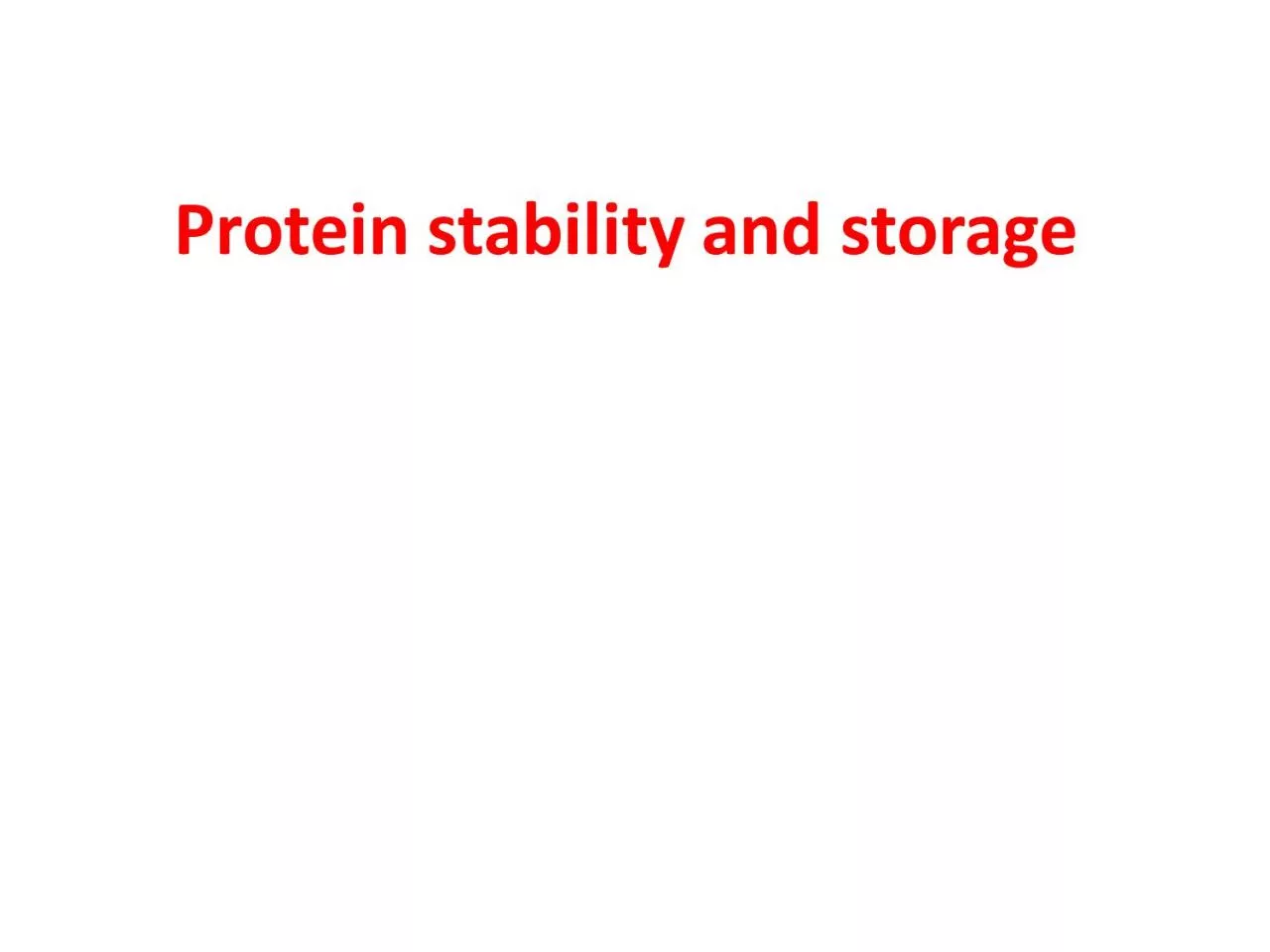

Storage condition Characteristic Solution at 4 C Solution in 2550 glycerol or ethylene glycol at 20 C Frozen at 20C to 80 C or in liquid nitrogen Lyophilizer usually also frozen Typical of shelf life ID: 930374
Download Presentation The PPT/PDF document "Protein stability and storage" is the property of its rightful owner. Permission is granted to download and print the materials on this web site for personal, non-commercial use only, and to display it on your personal computer provided you do not modify the materials and that you retain all copyright notices contained in the materials. By downloading content from our website, you accept the terms of this agreement.
Slide1
Slide2Protein
stability and storage
Storage condition
Characteristic
Solution at 4 C
Solution in 25-50% glycerol or ethylene glycol at -20 C
Frozen at -20C to -80 C or in liquid nitrogen
Lyophilizer
)usually also frozen)
Typical of shelf life
1 Month
1 Year
Years
Years
Requires sterle conditions or addition of antibacterial agent
Yes
Usually
No
No
Number of times asimple may be removed for use
Many
Many
Once: repeated freeze –thaw cycle generally degrade protein
Once: impractical to lyophilize
asample
multiple times
Slide3Protein
Stabilizing
Cocktail
(Product No. 89806) is a 4X solution that helps to extend the shelf-life of most proteins for storage at 4̊C or -20°C.Cryoprotectants such as glycerol or ethylene glycol to a final concentration of 25-50% help to stabilize proteins by preventing the formation of ice crystals at -20°C that destroy protein structure.Protease inhibitors prevent proteolytic cleavage of proteins Anti-microbial agents such as sodium azide (NaN3) at a final concentration of 0.02-0.05% (w/v) or thimerosal at a final concentration of 0.01 % (w/v) inhibit microbial growth.Metal chelators such as EDTA at a final concentration of 1-5 mM avoid metal-induced oxidation of –SH groups and helps to maintain the protein in a reduced state.Reducing agents such a dithiothreitol (DTT) and 2-mercaptoethanol (2-ME) at final concentrations of 1-5 mM also help to maintain the protein in the reduced state by preventing oxidation of cysteines.
Many compounds may be added to
protein solutions
to lengthen shelf life
: